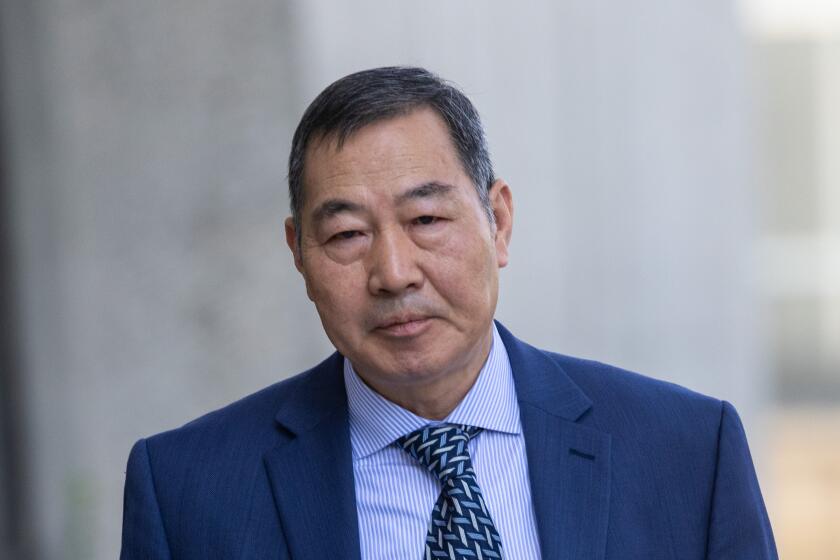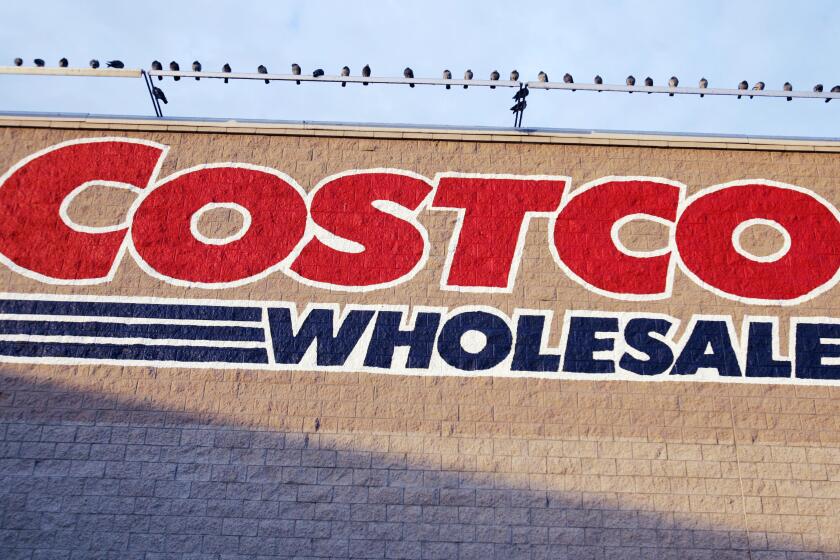Parent Inventors Turn Brainchild Into Cash
Holly Baxter was a stay-at-home mom looking for ways to make ends meet when she met Laine Caspi at a parents group. Caspi had recently started marketing a baby carrier that she’d designed, and she offered Baxter a deal: Think of a baby product worth selling, and Caspi would get it to market and give her a percentage of the proceeds.
Baxter came up with Teeny Towels -- all-natural antibacterial wipes small enough to hook onto a keychain. The product is too similar to basic baby wipes to patent, but it’s distinctive enough to package and promote. Last year it paid Baxter $5,000, and the product is likely to produce more in royalties this year because a number of large retailers recently agreed to carry it.
Baxter doesn’t think that her wipes are going to make her a millionaire. But the return on her invention handily beats the hourly rate she’s earned at part-time jobs, she said.
“Since they’ve been on the shelves, all I’ve done is walk to the mailbox” to collect royalty checks, Baxter said. “It’s like free money now. It’s great.”
Licensing products for a profit is not new. Hundreds of inventors do it each year, some for many decades. Nolo Press, a Berkeley-based publisher of legal books, even has a how-to manual called “License Your Invention,” which tells prospective entrepreneurs how to move an idea “from thought to bought” -- and roughly what inventors can expect to get in a licensing deal (anywhere from 3% to 12% of the net sales price).
Now licensing is becoming a popular personal finance strategy for stay-at-home parents, Caspi said. These parents have made the tough choice to be one-income families in a two-income world, but would like to make a few extra dollars. Many have business experience, and because they’re dealing with the challenges of parenting each day, they’re ideal inventors of kids’ products, she said.
“A lot of this is personal,” said Caspi, who runs a Granada Hills marketing and manufacturing firm called Parents of Invention.
Parent inventors are often solving their own problems -- designing streamlined diaper bags, more comfortable baby carriers, pacifier organizers, nursing pillows and other products for people just like them. Their market research involves talking to friends and acquaintances, most of whom are dealing with the same issues.
When the other mothers in the baby group are asking to buy your product, you know you’ve got a winner, Caspi said.
“I’d be at Costco and people would stop me and say, ‘Where can I buy that?’ ” she said. “That was how the company got started.”
People who believe they have a marketable idea -- whether baby-related or not -- and want to turn it into a moneymaker have a choice to make, experts say. They can go the licensing route, where they sell the idea to another company that will make and market it. Or they can manufacture and market it on their own.
Going it alone can potentially be more profitable, but it’s also more risky.
Just ask Tangela Walker-Craft, founder of a Lakeland, Fla., company called Simply Necessary Inc. She’s poured about $21,000 into designing and manufacturing a nursing pillow that can double as a pillow and blanket for a traveling toddler. If she sells out of her first run, she’ll just break even.
Walker-Craft is optimistic because all the moms she’s run into -- and several magazine editors to whom she’s sent samples -- want to buy the pillow. A business advisor recently told her that he was convinced her business was set to soar. If the product makes it big, she’ll reap all the revenue after paying her costs. But with her savings, and some of her mother’s money, on the line, she’s nervous.
“It would be nice to get some money coming in, instead of just paying it out,” Walker-Craft said.
Baxter, who says her family doesn’t have thousands of dollars to risk, went the licensing route. That allowed her to participate in the potential sales, without risking her own cash. The downside: If the product is a huge hit, she’ll get only 3% to 5% of the net sales.
Julia Young also went the licensing route. The Seattle-based mother of two created a combination baby carrier and diaper bag because she was sick of lugging around both when she ran errands with her infants.
“I had back carriers and hip carriers and diaper bags -- straps everywhere,” Young said. “I felt like a pack mule.”
She teamed up with another young mother who could sew. They made a dozen prototypes before settling on a design. They also spent $10,000 on hiring a patent attorney, creating marketing materials and attending trade shows.
Young said she spent the time and money to patent her product because having a patent can bring higher royalties. But patents aren’t always required, experts say. Sometimes they’re impossible to get because the product is merely an improvement on an existing one and not distinctive enough to qualify as a patented invention.
Young eventually sold the licensing rights to Caspi’s Parents of Invention at a trade show, where she received numerous bids. She agreed to a 7% royalty rate, which is a bit higher than normal. She also got a $10,000 advance, an upfront payment that will be deducted from future royalty earnings. An advance is not refundable -- the inventor gets to keep it even if the idea flops -- so it’s a sign that the company that bought the license is optimistic about the product’s chances and is willing to put some money behind it.
Parents of Invention estimates that Young’s “sidekick” bag will generate royalties of $10,000 to $50,000 a year.
Of course, more ideas end up in the dustbin than on store shelves. Caspi gets hundreds of pitches each year and chooses only a few. Inventors’ chances of success are much greater if they do some research and talk to candid friends and relatives about their ideas before approaching a licensing firm, Caspi said.
Some ideas that didn’t fly: A bib designed to hold the baby’s hands down, like a straitjacket, and a pacifier that’s held in the child’s mouth with an elastic band, like a party hat.
Inventors often get just one chance to pitch their wares to a licensing company, Young said. Doing plenty of research, and coming prepared with a succinct pitch, boosts your chances.
“I have a friend who is in marketing and she told me that I had to get my pitch down to a two-minute elevator conversation,” Young said. “That’s about all the time you have to get them to listen.”
*
Kathy M. Kristof, author of “Investing 101” and “Taming the Tuition Tiger,” welcomes your comments and suggestions but regrets that she cannot respond individually to letters or phone calls. Write to Personal Finance, Business Section, Los Angeles Times, 202 W. 1st St., Los Angeles, CA 90012, or e-mail kathy.kristof@latimes.com. For previous columns, visit latimes.com/kristof.
More to Read
Inside the business of entertainment
The Wide Shot brings you news, analysis and insights on everything from streaming wars to production — and what it all means for the future.
You may occasionally receive promotional content from the Los Angeles Times.










